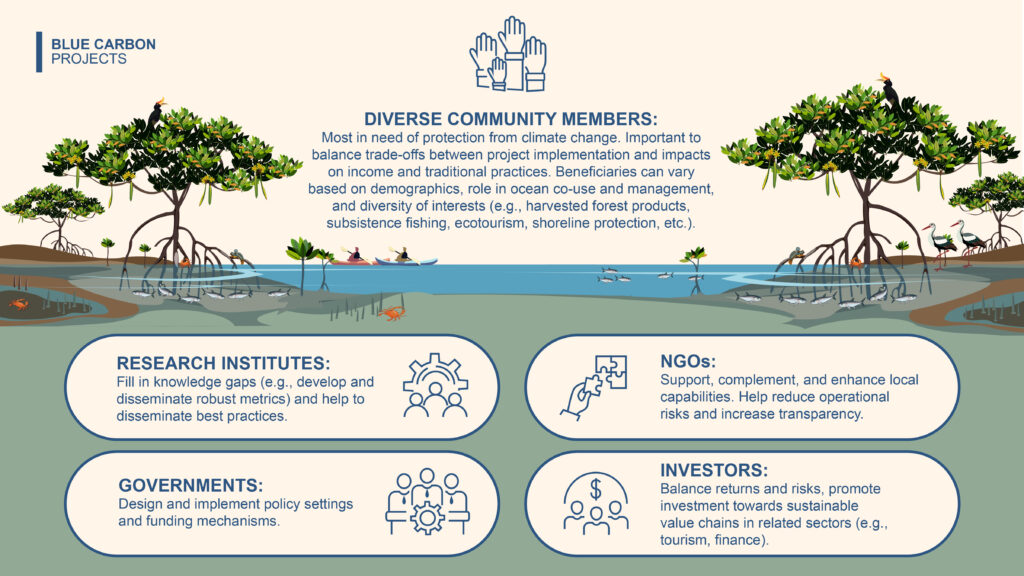
ESSIC Visiting Associate Research Professor Ariana Sutton-Grier has contributed to a chapter in a new book titled Beneficiaries, Equity, and Trade-Offs in Estuarine and Coastal Ecosystem Services. Sutton-Grier contributed to a section on blue carbon.
Coastal blue carbon is the carbon taken up and stored by coastal wetlands, specifically mangroves, tidal marshes, and seagrass beds. These coastal wetlands are very efficient at sequestering and storing carbon, and have done so for hundreds to thousands of years. As a result, there has been growing interest in blue carbon ecosystems as opportunities for natural climate mitigation. A recent estimate has shown that restoration of coastal blue carbon ecosystems could result in offsetting ~3% of global emissions. In addition to the known scientific and technical challenges to implementing blue carbon projects which people are working to meet, there are important social, legal, and cultural considerations as well. Broad community involvement is key for effective projects, and acknowledging that parts of a community, especially the most marginalized, need explicit recognition and may need financial support to participate in the process and to realize the most equitable and sustainable conservation outcomes.
Professor Ariana Sutton-Grier is an ecosystem ecologist with expertise in wetland ecology and restoration, biodiversity, biogeochemistry, climate change, ecosystem services, and nature and human health.
To access the article, click here: “Beneficiaries, Equity, and Trade-Offs in Estuarine and Coastal Ecosystem Services”.





